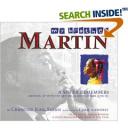My Brother Martin: A Sister Remembers, Growing up with the Rev. Dr. Martin Luther King, Jr.
- Author: Christine King Farris Illustrator: Chris Soentpiet
- Publisher and date: Simon and Schuster, 2005
- Genres: biography
- Age/Grade: 1-5
Author’s perspective:Christine King Farris writes with an insider’s perspective. She is Martin Luther King’s older sister and as she states in the forward:
I’ve known him longer than anyone else. I knew him long before the speeches he gave and the marches he led and the prizes he won. I even knew him before he first dreamed the dream that would change the world
Literary Elements:
Style:The book is written in a comfortable, familiar style. Figurative language such as “three peas in a pod” and “we stuck together like the pages in a brand-new book.”
Tone: Martin Luther King is described in a loving way, but he is also shown as the mischievous little boy that he was. This is the first book that I’ve read where many different sides of Martin Luther King are shown. As his sister, I’m not sure how much objectivity there can be, but there is enthusiasm and love.
Illustrations: The pictures are beautiful, vibrant, and full of color! There is a family warmth to them. The faces of the children (Martin, Christine, and Alfred) are so expressive and realistic. The “grown up Martin years” are depicted in a contrasting black and white.
Summary:
The life of Martin Luther King as seen through his older sister’s eyes. We see the siblings play pranks, enjoy stories, go to church, and get into trouble (as kids do). A happy childhood filled with playing, learning, and spending time with both black and white children is shown in both the text and illustrations. Only two pages are shown depicting Martin Luther King as an adult.
Curriculum Connections:
I have not used this book yet (I’m reading it this week). I can’t wait to see how the students react to it.
I will use it during my read aloud time. Before reading it, I will list what we already know about Martin Luther King. Then, I will say, “I wonder what Martin Luther King was like as a child?” The students will sit “eye-to-eye, knee-to-knee” and share their ideas. Then, students will share out to the whole group. I will introduce the book and read it to the class. I am so curious on what they say for their ideas!
Some questions during read aloud:
- Some of the imagery and figurative language is a little tough my students. I will have to stop as we go and discuss certain phrases.
- Why did their playmates stop playing with them? What do you think changed?
- Why did Mother Dear’s words give them hope?
- How did Martin Luther King turn the world upside down?
Web Resources:
- Chris Soentpiet’s website
- An interview with Christine King Farris from PBS (uploaded by PBS on You Tube)
- An interview with Christine King Farris from Time for Kids
Review:
From Publishers Weekly
Farris’s stirring memoir of her younger brother “M.L.” focuses on a pivotal moment in their childhood in Atlanta. The conversational narrative easily and convincingly draws readers into the daily life of Christine and her two brothers, M.L. and A.D., as they listen to their grandmother’s stories, stage pranks and romp in the backyard with two white brothers from across the street. The adults in the King family-Daddy, a minister; Mother Dear, a musician; maternal grandparents (the grandfather is also a minister) and a great-aunt-try to shield the children from the overt racism of the times; the family rarely took streetcars, for example, because of “those laws [segregation], and the indignity that went with them.” When the white boys announce one day that they cannot play with M.L. and A.D. because they are “Negroes,” the young Kings are hurt and baffled. Mother Dear explains, “[Whites] just don’t understand that everyone is the same, but someday, it will be better.” M.L. replies, “Mother Dear, one day I’m going to turn this world upside down.” Soentpiet (Dear Santa, Please Come to the 19th Floor) illustrates this exchange with a powerful watercolor portrait of mother and son that encapsulates many emotions, including hope, pain and love. Unfortunately, in other paintings, the characters often seem frozen in exaggerated poses, or minor figures are rendered with less skill than demonstrated elsewhere. These inconsistencies detract from an otherwise gripping volume that makes the audience aware that heroes were once children, too. All ages.
Copyright 2002 Reed Business Information, Inc. –This text refers to the Hardcover edition.
From School Library Journal
Grade 2-4-In the straightforward style of a master storyteller, Farris recalls the birth of her two younger brothers and relates anecdotes that demonstrate both the mischievous exploits of the siblings and the love and understanding that permeated the close-knit multigenerational family in which they grew up. Using plain language, she describes conditions in the South during her childhood that separated blacks and whites- “Because they just don’t understand that everyone is the same, but someday, it will be better.” From their father’s church sermons and his actions when confronting the hatred and bigotry, the children learned the importance of standing up for justice and equality. The warmth of the text is exquisitely echoed in Soentpiet’s realistic, light-filled watercolor portraits set in the King home, in their Atlanta neighborhood, and at Ebenezer Baptist Church. The simple directness of this short biography will help young children understand the concept of segregation and the importance of Dr. King’s message. An appended poem by Mildred D. Johnson reflects Farris’s own message: “-it is important for young people to realize the potential that lies within each of them-.” This outstanding book belongs in every collection.
Susan Scheps, Shaker Heights Public Library, OH
Copyright 2003 Reed Business Information, Inc. –This text refers to the Hardcover edition.
